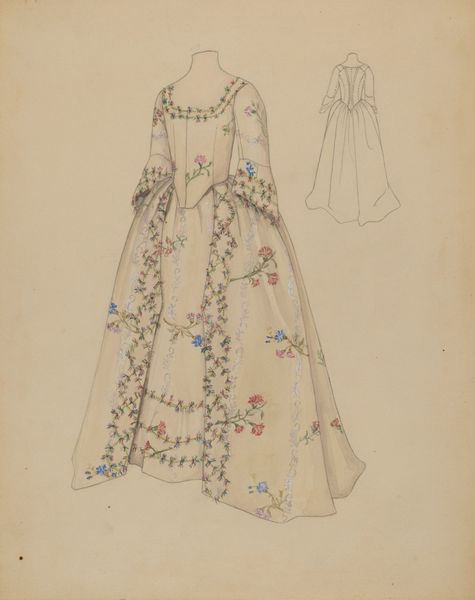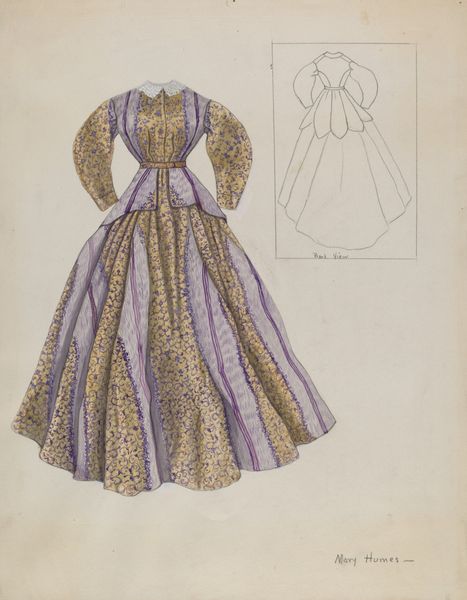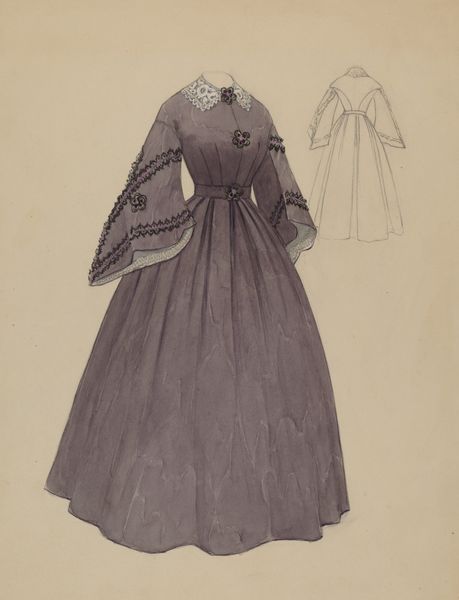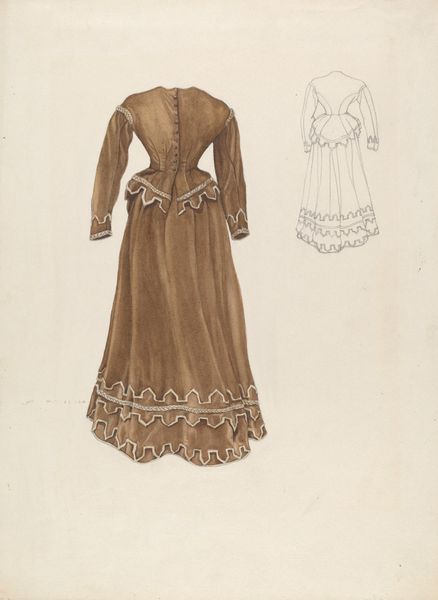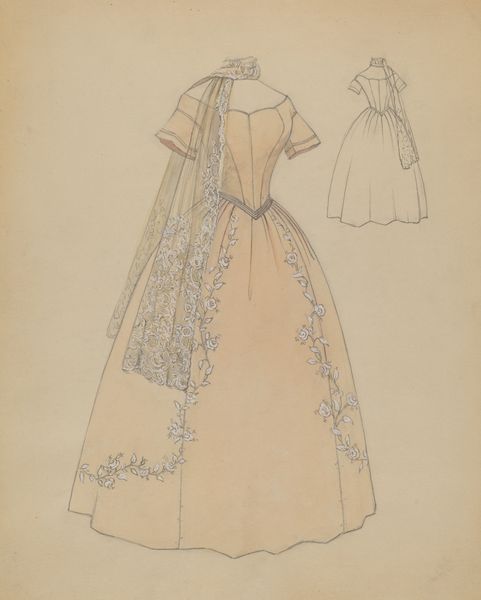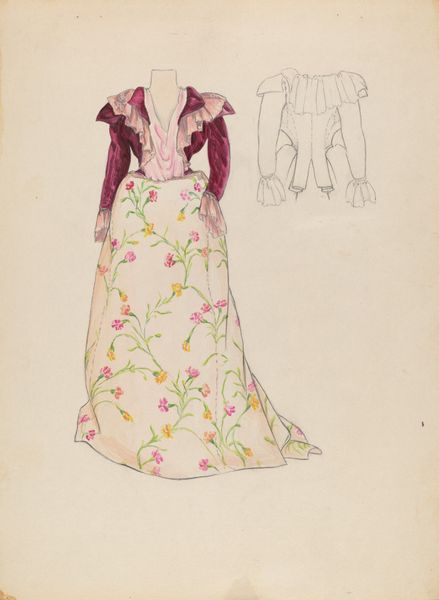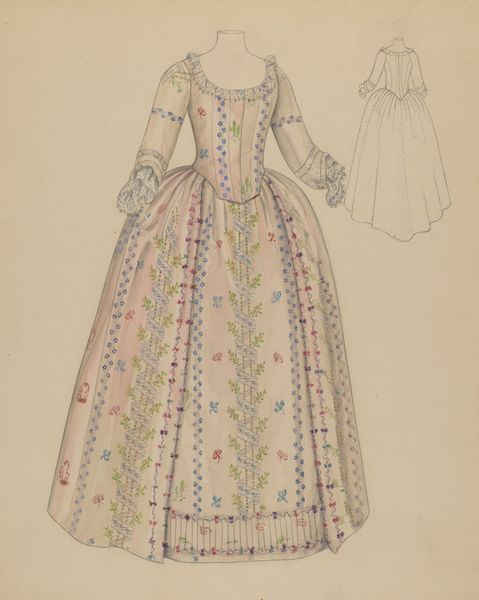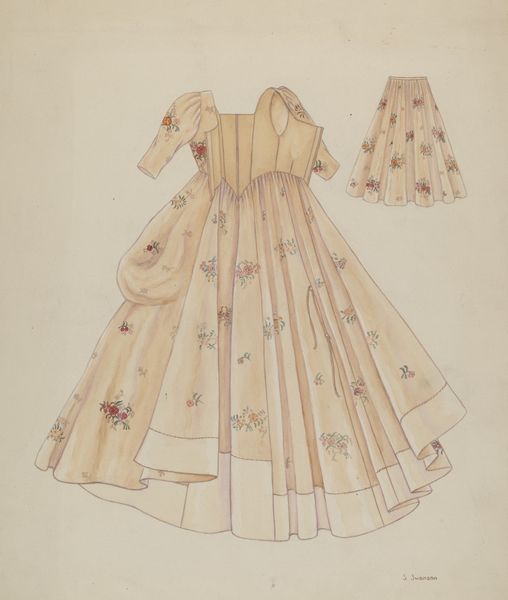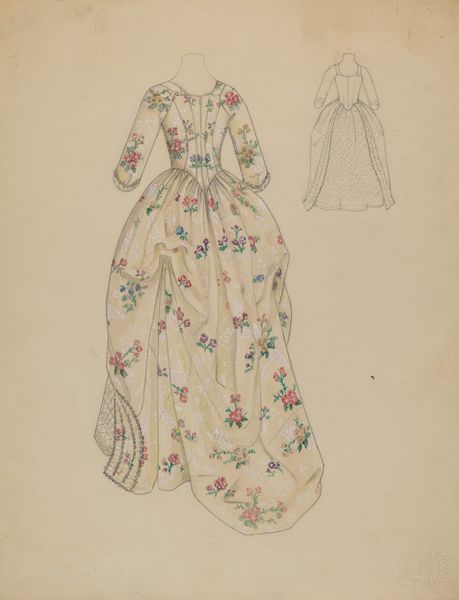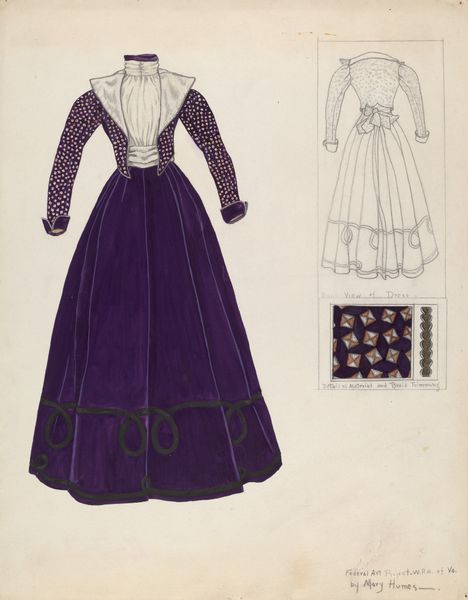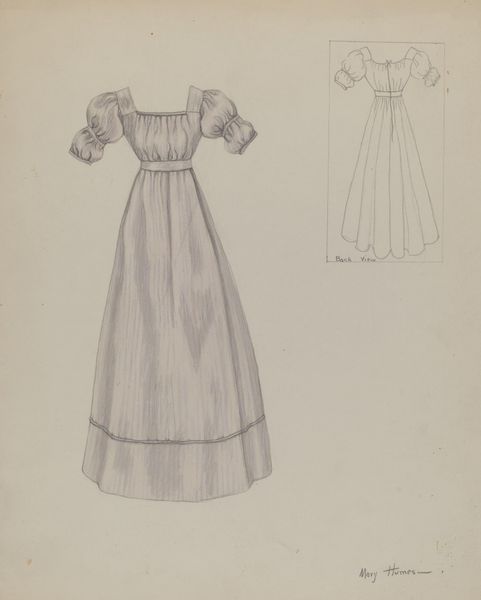
drawing, paper, watercolor, pencil
fashion design
drawing
underwear fashion design
fashion mockup
fashion and textile design
paper
watercolor
historical fashion
traditional dress
pencil
asian style outfit
fashion sketch
ethnic design
clothing design
Dimensions: overall: 29.8 x 23 cm (11 3/4 x 9 1/16 in.)
Copyright: National Gallery of Art: CC0 1.0
Editor: This watercolor and pencil drawing on paper is called "Dress," by Jessie M. Benge, from around 1936. There's something both nostalgic and aspirational about this fashion sketch. I'm curious about its story – what do you see in it? Curator: This piece offers a glimpse into the world of fashion design during the 1930s. Benge’s design reflects a specific type of aspiration, deeply rooted in social context. What does this dress communicate about the intended wearer? Is she a debutante, a working woman, or someone else entirely? Editor: I hadn't thought about the social context influencing the design! It seems rather modest with the high neckline and long sleeves, yet the delicate floral embellishments add a touch of femininity and aspiration. Is that reflective of the time? Curator: Exactly. Consider the socio-economic factors influencing fashion at the time. The Great Depression lingered, impacting material availability and styles. Yet, there was also a burgeoning interest in individual expression, reflected here in the custom design elements and the care taken with this presentation of “fashion”. Does this design reflect accessibility or aspiration during the time? Editor: Thinking about the Depression era definitely changes my view. Perhaps it's not just a pretty dress design, but a subtle statement of hope and even, in a small way, of luxury during a difficult time. Curator: Precisely. And it speaks to the power of fashion design as a medium reflecting social, economic, and political landscapes. Consider the role of such drawings in shaping and disseminating fashion trends; what impact did these sketches have in their day? Editor: I hadn't thought about the power of the image itself, to disseminate the design so widely. It gives me a lot to think about in terms of how clothing and art are intertwined, as cultural mirrors reflecting social values. Curator: Indeed. Analyzing the design choices within their historical framework provides a rich understanding beyond aesthetics; it becomes a window into the era’s socio-political fabric. This really encapsulates a wider history.
Comments
No comments
Be the first to comment and join the conversation on the ultimate creative platform.

